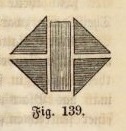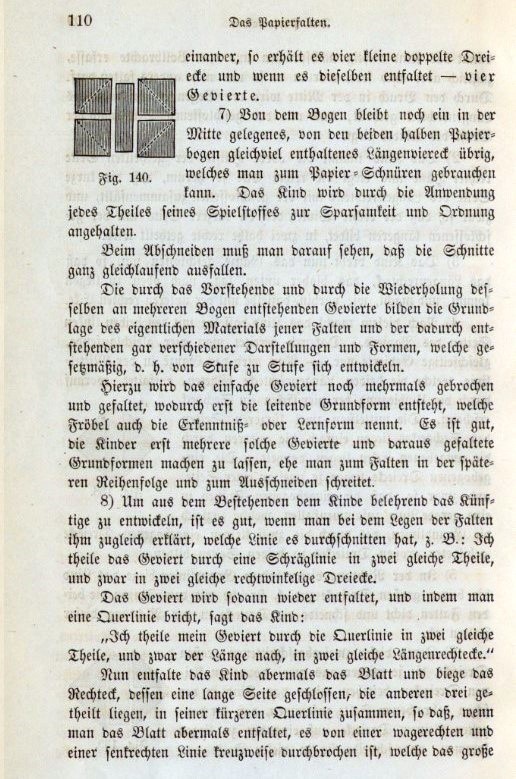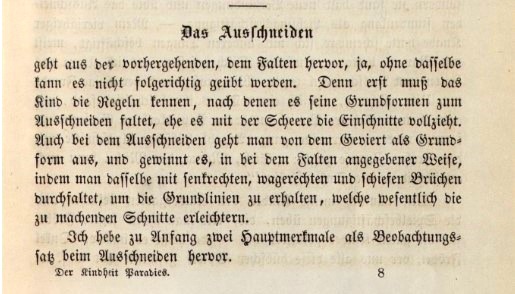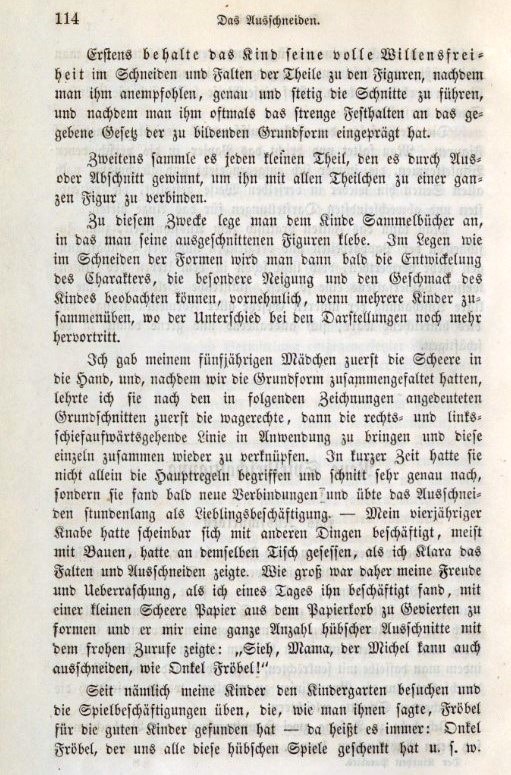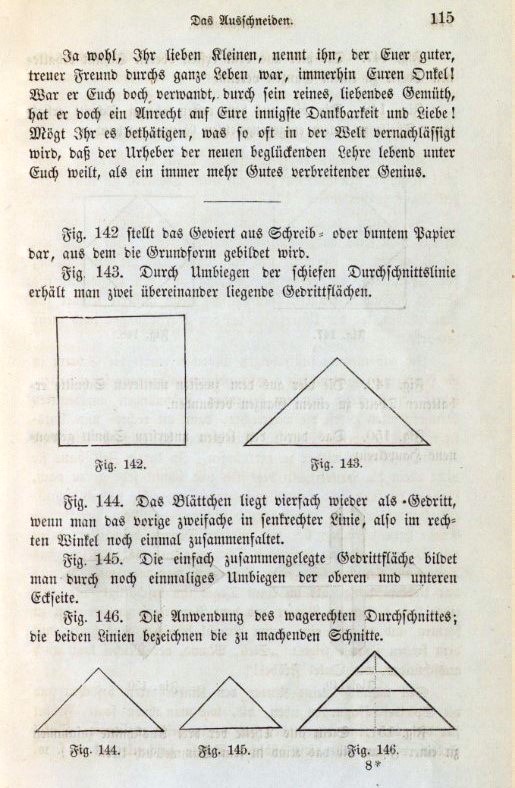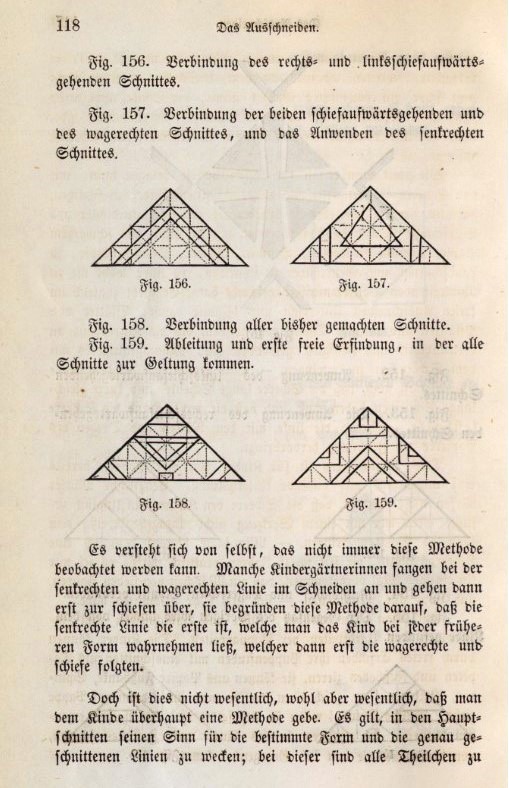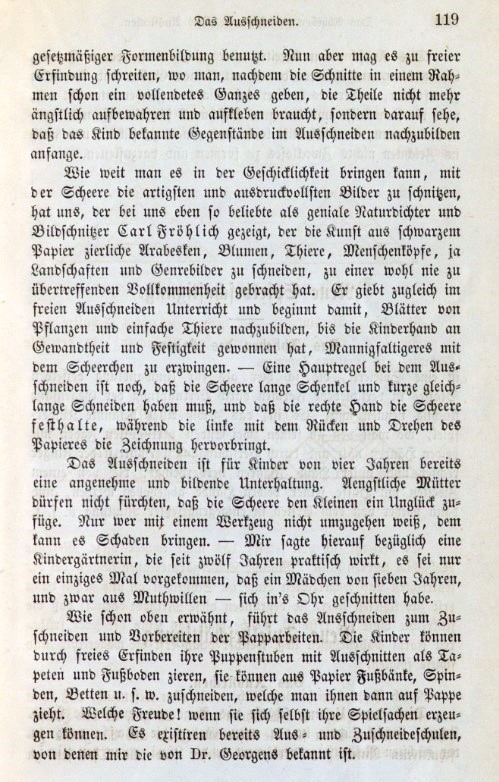| The Public Paperfolding History Project
Last updated 16/10/2025 x |
|||||||
| Das Paradies der Kindheit by Lina Morgenstern, 1861 | |||||||
| 'Das
Paradies der Kindheit' (The Paradise of Childhood) by
Lina Morgenstern was published in Leipzig in 1861. It
contains sections on 'Das Papierfalten' (Falten), 'Das
Ausschneiden' (Ausschneiden und Aufkleben) and 'Das
Schnuren ungetheilter Papierstreifen' (Verschnuren). A full copy of the 1861 1st edition can be accessed online here. A full copy of the 1878 fourth edition can be accessed online here. **********
********** Analysis Das Papierfalten (Falten) The general remarks about paperfolding include the following passage, which indicates that paperfolding is seen as a creative activity. Roughly translated it says: 'The simple sheet of paper that Froebel gives the child opens up the entire wealth of geometric as well as artistic forms.'
********** The author then explains Froebel's method of cutting four squares from a rectangle, which she says should be carried out by the children themselves as the process also teaches many basic geometrical ideas.
The final instruction of this section says that the rectangle left over in the centre of the paper can be used for Papier-Schnuren (Verschnuren), and that: 'The child is encouraged to be thrifty and orderly by using every part of its play material.'
********** There are several references to a groundform in the text but no specific instructions for folding it are given. It is almost certainly the Double Blintz Basic Form that the author is referring to here: 'Folding is primarily about finding an Erkenntnis, ie a Groundform from which one derives all other folding forms and from which one then creates new Groundforms.'
********** The author the states that she 'will not give any drawings of foldings, because they would be difficult to visualise. However, I will briefly outline the process of development. First fold a number of Groundforms, which you designate with the letters A, B, C'. The A Groundform can be developed into 'objects from life (ie Lebensformen) of which she gives the examples 'mirror, picture frame, salt and pepper shaker, table, sailing ship, two boats, a bird, a bag, two fish boxes etc.'
********** The B Groundform can be developed into 'Schonheitsformen' of which she gives the examples 'the simple flower, the star, the rose, the filled rose' which are nt identifiable from the information given. The author also states 'which can be combined into a whole by joining several folded sheets together, which can be placd onbe inside the other or opposite (beside?) each other. In this way the most beautiful things can be represented.'
********** About Groundform C she says, somewhat obscurely, 'The sequence of Erkenntnisformen produces geometric figures ... (which) ... offer the most charming and varied representations to the eye.'
**********
********** Das Schnuren ungetheilter Papierstreifen (Verschnuren). Of this activity the author says: 'Here too Froebel uses the the patterns already familiar to the child', which is a clear attribution of this occupation to Frobel himself.
********** Das Ausschneiden (Ausschneiden und Aufkleben)
********** |
|||||||



